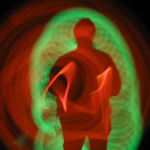"We're in the business of rigging elections." Does that include Mexico?
Yep, and that's why we can't get rid of these clowns. They've used every trick in the book to make sure they are re-elected, as might be expected. Congress Critters are only human after all (okay, that might be open to debate in James Sensebrenner's case), but a 98 percent re-election rate for incumbents is unacceptable.But the court, in six opinions spanning 123 pages, rejected the broader challenge to the Texas plan, holding that there is nothing inherently unconstitutional about redrawing congressional maps in the middle of the decade in order to give one party a political advantage. The ruling opens the door for state lawmakers to redraw congressional maps whenever there is a shift in political power, instead of after the federal census at the start of each decade, as has been customary.
The ruling was a disappointment for reformers who hoped the court would rein in partisan gerrymandering, which has been blamed for a host of ills, from noncompetitive elections to increased animosity in Congress. Armed with sophisticated computer programs, legislators have drawn maps to create safe congressional districts with clear partisan majorities. And it has worked — two years ago, nearly 98 percent of House incumbents won re-election.
As one North Carolina state senator put it, "We're in the business of rigging elections."
As another US News article makes clear, we may be living in "A Fake Democracy":
But redistricting isn't the only culprit. The skyrocketing cost of running for Congress is also stifling competition. In 1990, successful House challengers spent an average $282,000 on their campaigns, as measured in current dollars. In 2004, winning challengers shelled out an average $1.6 million each. At the same time, the chances of winning plummeted. In 1990, 16 challengers won. In 2004, just five did. "In the last election," says Sheila Krumholz, acting executive director of the Center for Responsive Politics, "a challenger who spent less than a million dollars technically had zero chance of winning."What kind of democracy is this if only rich people can get elected? At least we know the upper class is well (very well) represented; but what about the underclass? How can we call this a democracy when 90% of the people aren't represented in Congress at all?
What would explain why only five challengers managed to take office in the 2004 elections? I'll tell you: This government sounds more like an oligarchy than a democracy. From the article:
Two years ago, nearly 98 percent of House incumbents seeking re-election won, capping a decade of partisan stasis unmatched in U.S. history. "House elections ... are starting to take on all the suspense of contests for the old Soviet Union's central committee," writes Juliet Eilperin, author of the new book Fight Club Politics: How Partisanship Is Poisoning the House of Representatives. What happened to the institution the Founders designed to be more responsive to voters than any other? The answer has to do with redistricting, money, and an increasingly polarized "red"/"blue" America. At a moment when the Bush administration is aggressively pushing democracy abroad, there are serious questions about the health of the American democratic experiment at home.Bush's focus on democracy in other places is a useful distraction while he steadily chisels it away back home. His actions have been opposed to democratic principles in almost every decision he made.
Dubya's "democracy"-export plan continues in Mexico, where there have been discoveries of uncommonly large amounts of blank ballots:
...That’s noteworthy in light of the surprise showing of candidate Senor Blank-o (the 827,000 ballots supposedly left “blank”).I wonder if they'll trot out the "they're too stupid to vote properly" excuse again? That's usually a winner. Speaking of winners, they're saying that Calderon is the winner, but I'm with Palast on this on; it's just not clear who the winner is yet. Count those "blank" ballots and maybe we'll have a clearer picture.
We’ve seen Mr Blank-o do well before - in Florida in 2000 when Florida’s secretary of state (who was also co-chair of the Bush campaign) announced that 179,000 ballots showed no vote for the president. The machines couldn’t read these ballots with “hanging chads” and other technical problems. Humans can read these ballots with ease, but the hand-count was blocked by Bush’s conflicted official.
And so it is in Mexico. The Calderon “victory” is based on a gross addition of tabulation sheets. His party, the PAN, and its election officials are refusing Lopez Obrador’s call for a hand recount of each ballot which would be sure to fill in those blanks.
Blank ballots are rarely random. In Florida in 2000, 88% of the supposedly blank ballots came from African-American voting districts - that is, they were cast by Democratic voters. In Mexico, the supposed empty or unreadable ballots come from the poorer districts where the challenger’s Party of the Democratic Revolution (PDR) is strongest.




0 sick little monkeys said:
Post a Comment
Links to this post:
Create a Link
Home